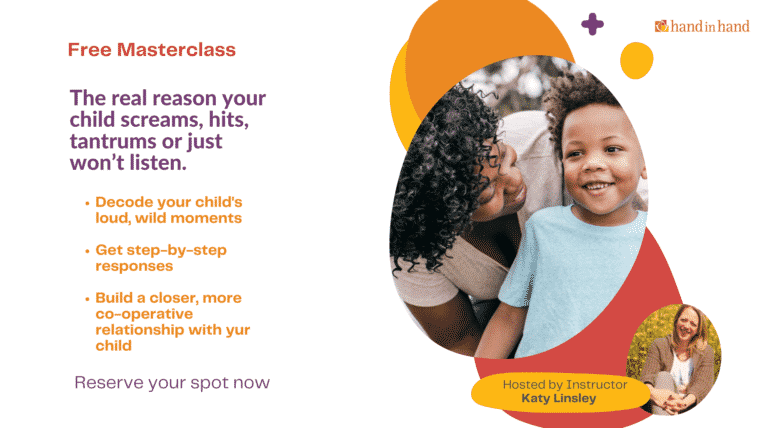On any given week our family can have anywhere from 0, 1, 2, or 3 children in our home. As a blended family we are constantly in flux as schedules change and children move back and forth between different homes. Sometimes we’re all together, sometimes we're not. It’s a challenge we all roll with week after week adjusting to the different dynamics that result from co-parenting and a constantly changing family structure.
While transitions can be hard for both parents and children, there are steps you can take to alleviate the stress while also strengthening your bond with both your children and stepchildren.
Turn your focus inward
This is always the first step. After all, if you’re going to be the strong foundation your child needs then it’s important for you to feel supported too. It’s not easy to leave a distraught child or listen to their complaints about us if they think the other parent’s house is more “fun.”
Having an outlet where you can offload about those feelings can help you process the feelings you hold about these difficult moments.
One of the best self-care and resourcing tools available for co-parents and stepparents is the listening partnership. In a listening partnership you trade equal amounts of time talking about what’s happening for you in your parenting and in your life.
Having a listening partner allows you to vent about all the things you don’t want to leak out when you are with your children. You can think more clearly, and parent more from a place of choice rather than reactivity. As much as possible we need to shield children from adult issues and feelings so they can focus on their relationship with each of their parents.
While having an amicable relationship with our children’s other parent is in our children’s best interest, it’s not always easy, and in some situations may be near impossible. Many parents find that having a listening partner to talk to about difficulties in bringing together a peaceful blended family helps them process those feelings outside of their relationship with their child, leaving them more playful, patient and calm.
And many find they also develop a healthier relationship with their former partner in the process.
Before we can support our children around transitions it’s helpful for us to have a place to safely feel and explore how transitions feel to us too. While some co-parents celebrate time alone, others may mourn the time away from their children. We all need to be heard.
Although it’s normal for children to need to have feelings about the transition, our internal alarm systems can be easily triggered by them. When we have the space and support, we don’t get so caught up and confused about why they might cry or get upset. When it feels less personal, you can respond with less reactivity.
In a blended family, each parent may have different feelings and moods depending on who is coming and going. This is completely normal too. There is no right or wrong way to feel here. What makes the difference is being supported right where you are at.
Some of these feelings may even be beyond our conscious awareness and yet still drive our behavior in terms of how we act on “transition days”. If you notice patterns that don’t work well, Listening Partnerships, or work with a therapist, can help you examine them, heal yourself and make changes.
Making space to reconnect in a blended family
Whether you meet at a neutral location, or have a pick up/drop off at one of your homes, try to create some buffer time, where things are relaxed and you can be available to your children. During this pick up time it’s important that your children, whether biological or step, sense they are welcome back into your sphere.
When we can recognize how little choice our children have in a blended family set-up (and life in general), we can make space for their big feelings. It may seem paradoxical, but having a good cry about the transition can actually make it easier for your child to move forward and have a good time afterwards.
What does making space look like? It can look like getting on your child’s level, offering warm eye contact, and having your body language open and receptive to affection when they’re ready. If your child is prone to big upsets during transitions, be prepared to listen. Some children may signal their upset in other ways, say by hitting you, running from you, hiding, ”bouncing off the walls” or being disengaged, and you can use your Listening Partnership to prepare for this and to figure out how you’d best like to respond.
Often this will involve warmly listening while setting a limit. For example, you may take those hitting hands and hold them: “I know it’s hard to leave sweetie, and it’s time to go now. You’ll be back with mommy/daddy next week.”
If tears come, that’s great! Our children need time to grieve the loss they feel. If you’re able to stay close and listen (what we call Staylistening at Hand in Hand) it will help your child shed the feelings that trouble them and strengthen your bond as they feel your loving support.
Sometimes the feelings won’t come out until you’re back at home. Hand in Hand Instructor Julie Johnson at Parent Child Connection recalls how it was early on in their blended family when her stepdaughter was younger. “Transitions were tough,” she says, “but while leaving was hard, arrivals seemed to be worse.”
She remembers one afternoon in October, many years ago, when her stepdaughter, aged eight or nine, arrived at her place in a pair of tall cowboy boots that she was planning to use for her Halloween costume.
“We have a custom of taking our shoes off at the door—a policy she knew well and normally followed. But that afternoon she refused to take off her cowboy boots,” Julie recalls.
“She told me she wanted to leave them on, there was no reason to take them off, and she stomped through the house to the living room. I followed her and let her know that she would need to take her shoes off. I reminded her that we don’t wear shoes in the house—that was the limit.
She plunked down on the coach and wrapped her arms around herself, unmovable. I bent down and gently touched her boots. I told her they needed to come off. She got up, took off her boots, threw them across the room, and stormed off to her bedroom and slammed the door.”
Julie waited a moment and then entered the bedroom. Her step-daughter yelled that Julie couldn’t tell her what to do, and that she would wear shoes in the house if she wanted. She stomped back to the living room, sat on the sofa and cried, as Julie sat with her.
“I didn’t say much,” Julie says.
As her tears slowed down, she asked what was for dinner that night. Pleased about the menu, she began putting some things away, dinner went well and the evening was relaxed. She took Julie up on an offer to do a short Special Time.
She’s now 17 and transitions aren’t an issue, Julie says. But her step-daughter remembers how good Julie’s support felt.
“One time in her early teens she went out to breakfast with my mom,” Julie says, “and she told her, “Julie used to do this thing where she would sit with me while I cried. I didn’t like it then. But I realize now how much better I felt afterwards.”
What if you can’t listen in the moment?
Don’t beat yourself up! The main idea is not to be angry at your child for having feelings about the situation. If you are leaving with your child and the transition has been hard, do your best to lovingly get them to the car or other location and then listen when you can.
If you’re the one leaving and your co-parent is unable to Staylisten, try saying your goodbyes and holding confidence that your child will have a good time with their other parent. You get more than one chance to support your child!
In fact, many kids pick up on the times you are feeling calm, resourced and able to listen well and will use those times to bring their feelings to you. Trust the feelings will be there later for you to listen and support them through.
Make time for play
Play is every child’s first language, and there is no quicker way to their heart! Finding ways to be lighthearted and humorous about transitions and all the challenging feelings that come with it, can be a welcome relief to any heaviness.
Give your co-parent a heads up that you want to try something new and would like to have a little extra buffer time to not rush the transition.
If your child hides during transition time, try making it into a little game. Maybe you say, “Oh where has my little cutie pie gone?! I have a hundred hello (or “see you soon”) kisses for you! I must find you!” See what gets your child giggling and follow their lead. Often just 5 to 10 minutes of play where the child gets to feel more powerful and in charge can turn things around.
Humor helps skip the power struggles in a blended family
Play is a fantastic way to skip past power struggles too. If your child is ready to “defy” your house rules, try loving limits to diffuse the tension. Whether your child says, “Mom lets me jump on the couch at her place!” or “Dad lets me eat in the living room!” you can step in with warmth and affection as you say something like, “Oh good! I’m glad you have a place to do that! And here, our rule is still no jumping on the couch/food in the living room.” Cue some hair ruffling, vigorous snuggles, or hugs here to convey your acceptance of them while still holding the limit (without judging the other parent’s choices!).
Parents often worry that being light hearted will encourage “bad” behavior, but what we find again and again is that play can address the deeper needs and feelings underneath (like needing to belong and feel accepted) and help a child find their way back to cooperation more easily.
You may get laughter which is a signal to keep playing or you may get angry words and tears which lets you know there may be some bigger feelings under the surface that need to be heard.
Another way to play is Special Time. In Special Time you set aside a short amount of time to just follow your child’s lead, delighting in whatever they want to do. It’s one of the best ways for a child to really feel our love and acceptance of them. Try making Special Time a tradition on transition days, and see if you see a difference. Keen to get started? Here’s a one-page Special Time checklist on how to make the most of this time.
How soon can I expect results?
These ideas will help smooth transitions in the first place, and when upsets break out, they give you tools to handle the feelings responsively rather than reactively. When humans have regular opportunities to offload they heal, but it does take time.
Sometimes we see immediate changes when we shift our responses, and sometimes we don’t. Indeed, given the opportunity to be seen and heard, occasionally feelings will flare. That’s okay.
Like yoga or meditation, you can view this work as a practice, where emotions are the project. You will find too that re-programming some of your usual responses and quieting the critical voice that so often accompanies changes like these takes some effort and time, just as your children and co-parents may take a moment to adjust.
Transitions like separation, divorce, co-parenting and bringing together a blended family are big, ongoing and trigger feelings that will take some time to work through. Expect this.
Try not to rush and take comfort that by getting your support in place you will be better able to deal with what follows. You will see real shifts if you stick with these ideas.
By staying close and hearing your child's anger and upset, and seeing the tears, you are doing the best you can to support your changing family. That is what counts now, and you’ll see, will be appreciated in the future.
Decode your child's hard to handle behavior – and get tools to help make it easier
This class demystifies your child's loud reactions and big upsets. You'll get practical science-backed tools to work through them—even if you're frustrated and feeling like you've tried every parenting tip out there.
After this training, you'll be able to:
- Decode what's causing your child's defiance, whining, crying and more.
- Know how to respond to stop squabbling, power battles, complaining and testing limits from escalating using just five simple tools that are kind AND effective.
- Why you don't need to “fix” behavior to see a huge improvements and what to do instead.
- Stop yelling and using laughter and humor to connect with your child as you guide them, even if you feel totally burnt out right now.
- Stop using punishments that don't work, and instead use a framework that really reaches your child in their loud, wild or upset moment.
Use this link to watch now or schedule the most convenient time for you.
Schedule when to watch here.


